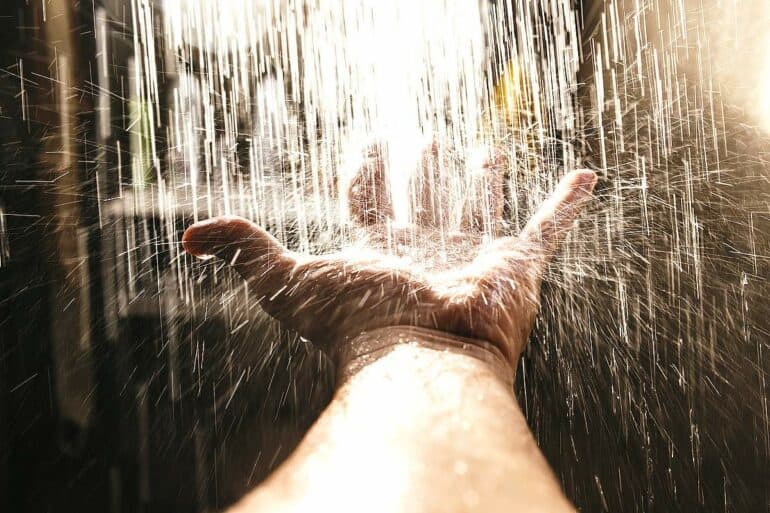How can alternating stimuli increase your well-being?
- Alternating stimuli during sauna bathing promote blood circulation and strengthen the immune system.
- Sauna bathing helps reduce stress and promotes mental relaxation.
- Regular sauna bathing improves skin health and stimulates the metabolism.
What are alternating stimuli?
In the context of sauna bathing, alternating stimuli is the abrupt change in temperature that our body experiences when we move from a hot sauna to a cold environment. This sudden temperature change is a shock to our system, but it proves to be extremely beneficial.
Physiological effects
- Strengthening the immune system: the high temperatures in the sauna simulate an artificial fever, which stimulates the production of white blood cells and antibodies. The abrupt change to cold further stimulates the immune system, making it more robust and resistant to disease.
- Promotes circulatory and cardiac health: heat causes vasodilation (dilation of blood vessels), which promotes blood flow. The rapid change to cold causes the opposite – the vessels contract. This “vascular gymnastics” improves the elasticity of the vessel walls and promotes circulatory health, which in turn strengthens the heart.
- Sweating and elimination: Intense sweating in the sauna promotes the excretion of salts, water and other substances such as urea and uric acid through the skin. The subsequent cooling stimulates blood circulation, which can support the body’s natural elimination processes.
Psychological effects
- Stress relief: the sauna heat promotes the production of endorphins, the “feel good” hormones, and the cold increases the production of adrenaline and noradrenaline, which are associated with the body’s stress response. This hormonal response helps reduce stress and anxiety and improve mood.
- Better sleep: many people report sleeping better after a sauna session. The changing stimuli affect body temperature regulation and melatonin production, both key factors in deep, restful sleep.
- Feeling renewed: Alternating hot and cold can provide a feeling of renewal and freshness that is very invigorating and increases overall energy levels.
Step-by-step instructions
Preparation:
- Start with a warm shower to prepare your body for the heat.
- Drink plenty of water before going to the sauna to ensure adequate hydration.
- Have all necessary towels, robes and beverages ready.
First Sauna Session:
- Enter the sauna and stay for about 5 to 20 minutes, depending on your experience and comfort level.
- Relax and breathe deeply to enjoy the warmth and prepare your body for sweating.
Cool-down period:
- After your sauna session, spend a few minutes in the fresh air and breathe deeply to stabilize your circulation.
- Then take a cold shower to close the pores and promote circulation. Use this moment to refresh yourself and stimulate your circulation.
- After the cold shower, a plunge pool is a great next step, especially if you are willing to expose your body to an abrupt temperature change.
- If a plunge pool isn’t available or if you’re looking for a less intense cold experience, the cold water hose is a great alternative. When showering off, start with the cold water at your feet and slowly move upward. This helps to cool the body down gradually and prevents too sudden a temperature shock.
- In winter, you can also take advantage of the invigorating effects of a snow bath by rolling around in the snow or rubbing snow on yourself after a sauna.
Rest:
- Rest while sitting or lying down for about 15 to 30 minutes.
- Drink water or other refreshing beverages during this time to maintain hydration.
Conclusion:
- End your sauna routine with a final cool down and a longer period of rest.
- Be sure to stay hydrated and fortify yourself with a small, vitamin-rich meal to restore your energy.
Some examples of nutrient-rich foods are:
- A colorful salad with a variety of fresh vegetables, garnished with nuts and a dressing of olive oil and lemon.
- A bowl of mixed fruit enriched with a few tablespoons of yogurt and a drizzle of honey.
- A healthy sandwich with whole grain bread, lean protein such as chicken or turkey, and plenty of fresh vegetables.
Conclusion
Sauna bathing, an age-old tradition, offers a wealth of health benefits that strengthen both the body and the mind. By incorporating alternate stimuli into your sauna routine, you can enhance your well-being and bring a sense of renewal to your life. Remember to do saunas safely and according to your personal needs and limitations. In the tranquility of the sauna, many find not only health, but also a moment of peace and reflection in our otherwise hectic world.

